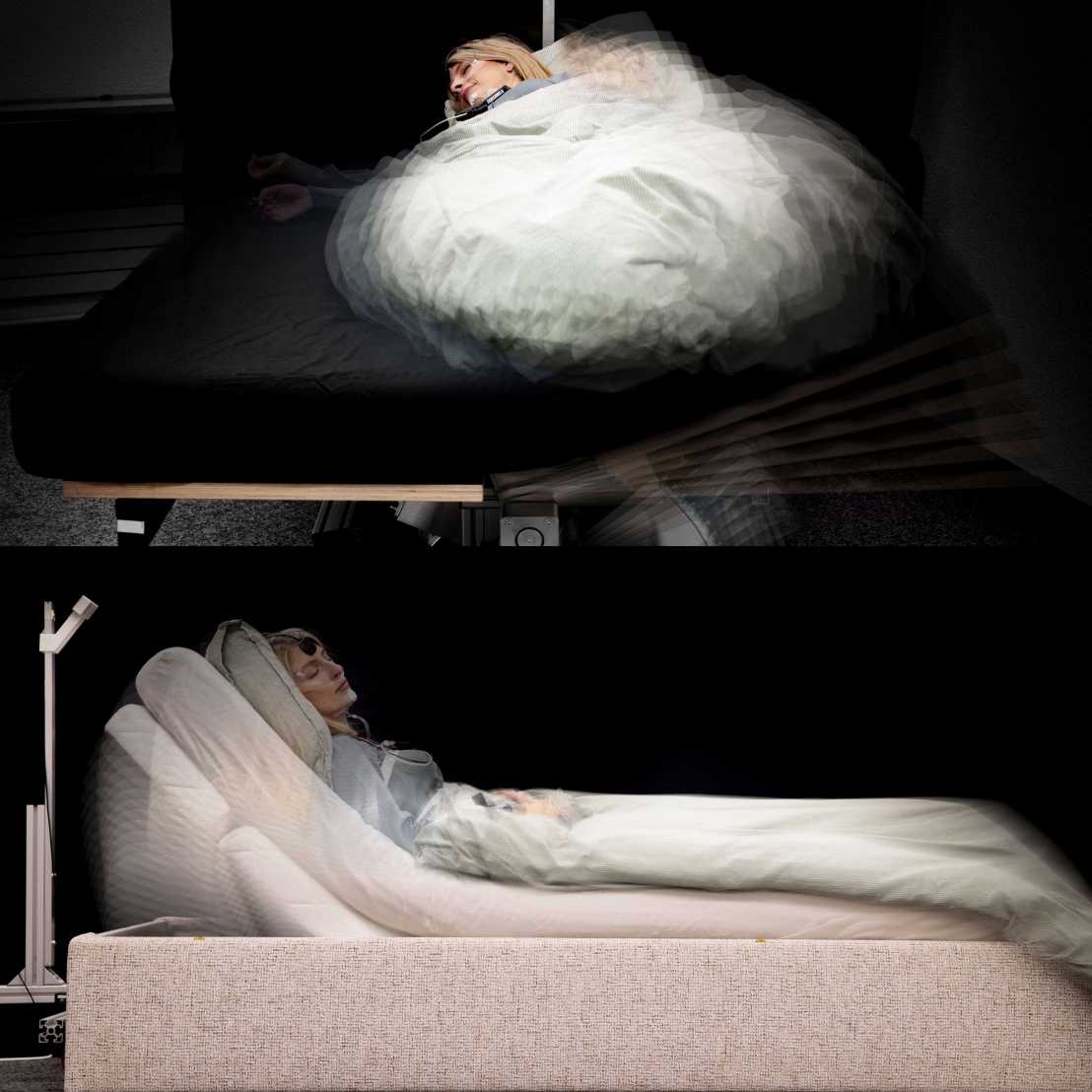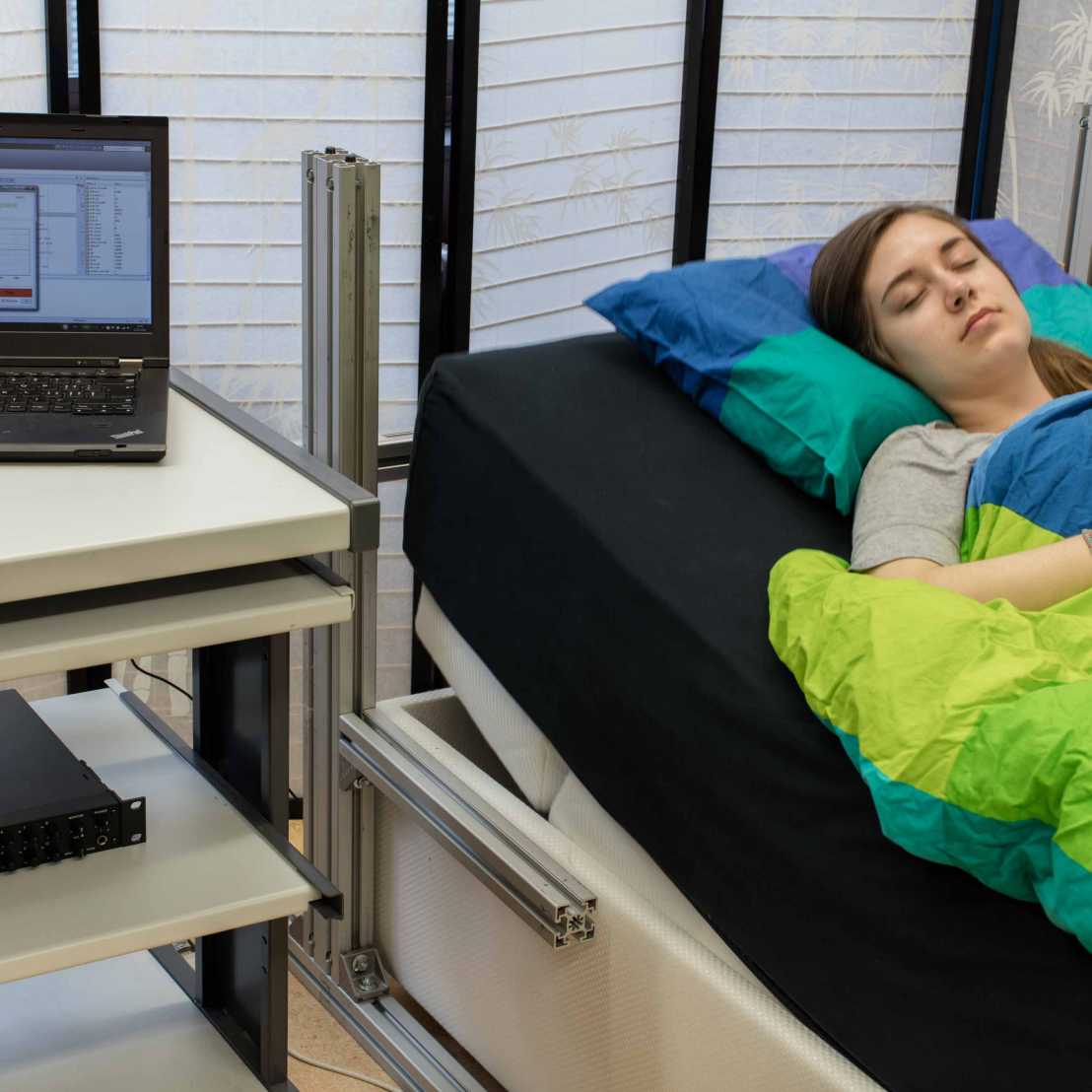Controlled Positional Therapy
Intermittent partial or complete obstruction of the upper airways during the night can lead to serious health issues such as sleep apnea, daytime hypersomnolence, and cardiovascular diseases. Most of these obstructions are caused by gravitational forces in supine position that act on relaxed throat tissue. Conventional ways of preventing airway obstructions include appliances that make sleeping in supine position uncomfortable and non-invasive ventilators that apply non-physiological continuous positive airway pressures (CPAP) to keep the airways open.
Involved People
chevron_right Oriella GnarraWe have developed specialized robotic beds that can detect partial or full airway obstructions as well as lying position and apply position changes:

Robotic beds that can change the sleeping position of users, making them an interesting treatment approach for position-dependent sleep apnea.
- Controlled Positional Therapy for the Treatment of Sleep-Related Breathing Disorders
Positional obstructive sleep apnea is a sleep-related breathing disorder characterized by intermittent cessations of breathing during the night. In most cases, these apnea events happen in supine position. Our two novel robotic bed platforms detect sleep apneas and perform gentle lateral or longitudinal rotations to prevent users from sleeping in supine position.

Similar to ISABel I, we have equipped a commercially available motorized bed with sensors that can detect snoring. By changing the position of the trunk or by providing subtle vibrations during the snoring episodes, we could show a reduction in snoring episodes.
- Controlled Positional Therapy to Reduce Snoring
Sleep position strongly influences snoring activity. The purpose of the project is to exploit this principle and to develop a smart bed to reduce snoring by actively influencing the sleeping position of the user. Particularly, the bed is fully autonomous enabling to track snoring in real-time and reacting in an interactive way by adapting the mattress shape and providing vibratory stimulation to influence the position of the user.
